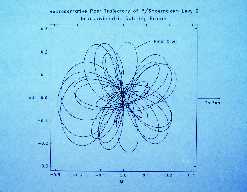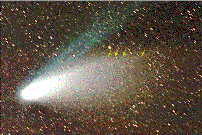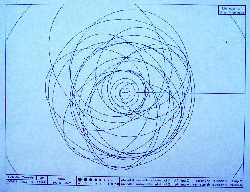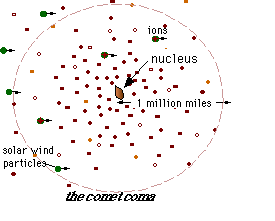This is an illustration of the orbits of the Jupiter Family of Comets.
Click on image for full size
The Jupiter family of comets
Comets are observed to go around the sun in a long period of time or a short period of time. Thus they are named "long-period" or "short-period" comets.
One group of short-period comets, called the Jupiter Family of Short Period Comets, is to be found circling between Jupiter and the sun, as shown in this diagram. This family is formed under the influence of the gravity of Jupiter and the Sun, and they likely come from the Kuiper Belt.
The gravity of those two giant objects perturbs the original trajectory of an incoming comet into such a tight ellipse that they oribt the sun in only 3-10 years.
Mathematical theory suggests that there may also be a family of short-period comets produced under the gravitational influence of the more distance solar system objects Pluto, Neptune, and Triton.
You might also be interested in:

Mathematical theory suggests that comet Shoemaker-Levy 9 was likely a short-period comet which was captured into orbit around Jupiter in 1929 and began to execute the trajectory plotted in this diagram.
...more
Hale-Bopp continues to offer surprises as astronomers study the comet. Using the Hubble Space Telescope and the International Ultraviolet Explorer, astronomers have found that there are distinctly different
...more
Six spacecraft flew by Halley's comet in 1986. There were two spacecraft launched from Japan, Suisei and Sakigake, and two from the Soviet Union, Vega 1 & 2. One spacecraft, ICE, from the United States
...more
Comets are observed to go around the sun in a long period of time or a short period of time. Thus they are named "long-period" or "short-period" comets. One group of short-period comets, called the Jupiter
...more
Scientists have learned a great deal from the crash of comet Shoemaker-Levy 9. Scientists traced the orbit of the comet backwards in time to guess its origin. This calculation, along with the discovery
...more
As the ices of the comet nucleus evaporate, they expand rapidly into a large cloud around the central part of the comet. This cloud, called the coma, is the atmosphere of the comet and can extend for millions
...more
When evaporation begins, the gas is propelled from the nucleus at supersonic speed (depicted by arrows in the figure). Because of the low gravity in space, this means that the molecules from the nucleus
...more














